Dance therapy provides an avenue for expression that serves as an emotional outlet, physical activity, and creative art form. Dance allows people to communicate feelings without words, and there is tremendous healing power in this kind of expression. Exposure to dance movement therapy can allow a person to achieve cognitive, physical, social, and emotional empowerment. This creative expression of joy, anguish, love, and anger can reduce stress and promote healthy sleep.
Connecting the Mind and Body
A primary underlying principle of dance therapy is the connection between the body and mind. Treating both together rather than separately helps to facilitate healing from addiction. The belief that trauma and other emotional issues are often trapped in the body is another principle. Holding them inside causes the body to express the issues in other ways, including the following:
- Chronic pain
- Severe tension
- Insomnia
- Social withdrawal
The current state of a person’s body affects their mental and physical health. This principle holds that this happens in both negative and positive ways. Expressive movement can reflect the unconscious processes of what is happening internally. Dance therapy seeks to help them find nonverbal ways to release what could harm them.
Dance Therapy: The First Stages
Therapy in a dance therapy program also follows four distinct stages. The first stage is preparation. During this initial stage, the person warms up for the movement dance exercise. Proper warmup helps to ensure a person can move safely without risking an injury. Next, they enter the incubation stage to become mindful, relaxed, and open to what is about to happen.
Illumination and Evaluation
The illumination stage is where they learn what different movements may reveal. A person can also explore how the revelations impact their life. The last stage is evaluation so that a person can process the session. This is where they can discuss the significance of what happened during the session. A therapist may also share their observations and review how well the person is progressing towards treatment goals.
What Makes Dance Therapy Different from Regular Dancing?
It is common knowledge that dancing is good for a person’s health. It can improve muscle tone, balance, and cardiovascular endurance. During a dance therapy session, however, the movement is more than just exercise. It becomes a person’s language in addiction treatment.This therapeutic method gives the person movement vocabulary for physical expression. Their therapist assesses body language for non-verbal behaviors that can be insightful for a lasting recovery.
Multimodal Addiction Treatment
The right drug or alcohol addiction treatment program is essential for long-term sobriety. Crest View Recovery Center offers dance therapy and reality-based programs to ensure you receive the best care. Our other holistic forms of treatment include:
- Acupuncture
- Yoga
- Meditation
- Nutrition therapy
- Recreational therapy
Our non-judgmental and knowledgeable team is well prepared to give you and your loved ones the level of care needed for long-term recovery—intensive outpatient programs, including specialized programs for heroin, meth, or prescription drug addictions. We have years of experience helping people through the devastating consequences of addiction onto a life of joy and purpose.
Whole-Person Healing in Addiction Treatment
At Crestview Recovery, we offer flexible programming and progress-centered treatment for addiction. Clients are able to access therapies and treatment from the privacy of their own homes through telehealth services. Through video-conferencing, specialists can work together with you to help you heal from the inside out. The following treatment programs can be life-changing:
- Partial hospitalization
- Intensive outpatient
- Sober living
- Outpatient rehab
If addiction or mental health concerns hinder you from enjoying experiences and negatively affect your day-to-day life, our team of experienced therapists at Crestview Recovery offers a fresh, clinical approach to outpatient mental health services. Contact our treatment center by calling 866.262.0531 to get started on the rest of your life.
































